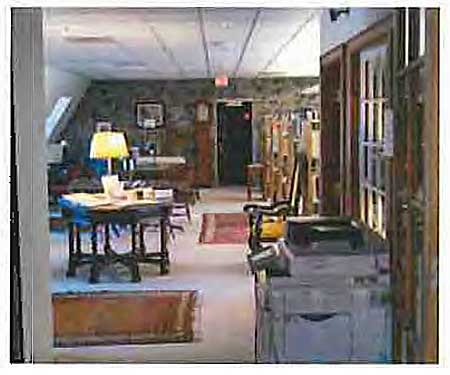Library’s Conflicting Data on Special Collections Use Raises Costs to State and Town

The willingness of the Jones Library Renovation-Expansion planners to present half-truths and exaggerated claims to maximize funding for the project has been well documented. The application to the Massachusetts Board of Library Commissioners (MBLC) for a state construction grant described the library service population as 51,000, or roughly three times the number of permanent Amherst residents who are the primary library patrons. The grant writers claimed a need to expand to 110,400 sq. ft. to support programming objectives, a size larger than all Massachusetts public libraries but those in Worcester and Boston.

MBLC grant awards have shown a preference for increasing library size, programming, and local investment over cost constraint and historic preservation. In June the MBLC granted Amherst a six-month extension to a contract requirement to start construction by June 30, 2024. After members of the public complained that new design changes were harmful to the historic character of the building, MBLC Building Consultant Andrea Bono-Bunker dismissed objections arguing, “None of the accepted changes impact our programmatic elements.”
The Jones Library grant applicants were successful in winning a construction grant of $13,871,314, the largest of 33 grants awarded by the MBLC in the 2016-17 grant round. The remaining share of the estimated $36.3 million project cost would need to be covered by municipal appropriation and additional fundraising. The Trustees’ overstating of space needs had a direct impact on the town’s budget.
Evidence that Library Inflated Special Collections Usage
A major argument for expansion was the need for a new Special Collections facility that would be climate controlled and more easily accessible to the public than its current third floor location. Building project proponents used this argument in winning both the MBLC grant and $1 million in Community Preservation Act (CPA) historic preservation funding.
In a January 2017 MBLC grant application the library wrote, “Special Collections is a gem for the general public. […] Over 4,000 people use Special Collections annually.”

This usage rate helped justify increasing Special Collections square footage from 4202 to 6257, or 55%. The grant proposal explained that this space need represents 10.08% of the total building area equating to a cost of $3.58 million. Overall project costs have since escalated by more than 25% to $46.1 million, inferring a current cost for the Special Collections facility of about $4.5 million.
Three years later, in March 2020, the library prepared a request for $1 million in CPA funds. This application reported Special Collections usage as significantly lower:
“The Jones Library Special Collections contain materials of local, national, and international importance. Researchers come from all over the world to use its Emily Dickinson and Robert Frost Collections as well as its other holdings – over 600 per year.”

Being more focused on the request’s preservation aspects than its space needs, the CPA Committee recommended funding the new Special Collections facility by a vote of 8-0-1 and in April 2021 the Town Council voted 12-3 to authorize borrowing the $1 million.
The Library has not explained why it represented Special Collections usage as 4000 people per year in the MBLC proposal and an 85% lower utilization of 600 people per year in the CPA request. However, given that programming needs drove the size of the MBLC grant which in turn drove the size of the town’s financial commitment, the discrepancy is significant to both Massachusetts and Amherst taxpayers.
Update on the CPA Award Legality Question
Last week we reported on a difference of opinion over whether the award of $1 million in CPA historic preservation funds to build a new Special Collections facility was an allowed use. The Community Preservation Coalition, the Massachusetts Department of Revenue and three members of the Amherst CPA Committee (CPAC) argued that historic preservation funds are not allowed to be used to fund new construction.
See related Legality of $1M Jones Library CPAC Award Remains in Question
Amherst Indy has learned that the Jones Library revised its application prior to the November 19, 2020 CPAC approval vote in an effort to make the request more acceptable. Two major changes were
- The amount of the request was reduced from $1,500,000 to $1,000,000.
- The request made clear that the new Special Collections facility would be entirely housed within the ground level of the original 1928 Jones Library.
It was also agreed that if the overall renovation-expansion project did not go forward, the CPAC request would be withdrawn.
Change #2 enabled the Library to argue that creating a new Special Collections facility should be considered historic rehabilitation and not new construction.
There is no record of the Community Preservation Coalition or Department of Revenue offering an opinion on the legality of the revised request. Nonetheless, and despite three members of the committee expressing opposition to the overall library building project, the CPAC request was recommended by a vote of 8 for, 0 against and 1 abstention.

